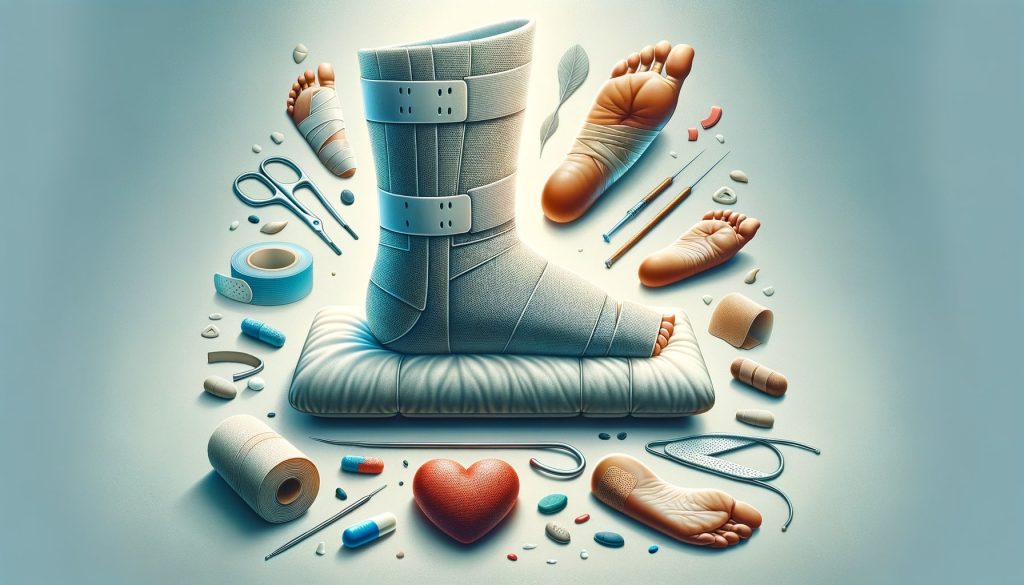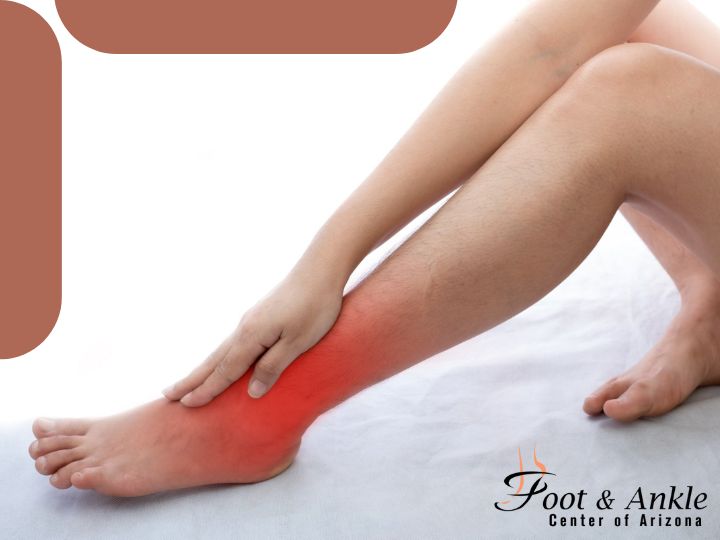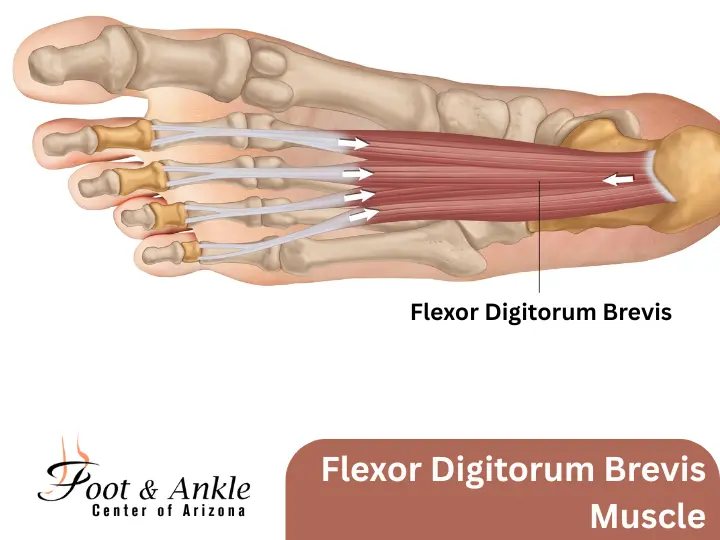How Long is Bunion Surgery Recovery: Find out how long it takes to recover from bunion surgery, understand the different phases, and explore the benefits of minimally invasive options like Lapiplasty 3D.
Recovery After Bunion Surgery
How long does it take to recover after bunion surgery? Although bunion surgery is a relief in many ways, it also raises many questions about your future. How long do you have to be off your feet after bunion surgery? Will you need physical therapy? When can you get back to your life without interruption? As a common foot deformity, bunions affect millions of people each year. For many, they aren’t debilitating and don’t require surgical intervention. However, when they become severe, bunions can impact your comfort and mobility, prompting many to consider surgical solutions.
In this article, we will weigh the pros and cons of bunion surgery, discuss recovery timelines, and explore innovative surgical options like Lapiplasty 3D that can expedite your healing process. Bunion surgery isn’t a one-size-fits-all solution, and it’s essential to understand the recovery period involved. Emerging less invasive options can significantly minimize downtime and speed up your return to normal activities.
Initial recovery from bunion surgery typically takes around six weeks, during which your foot will start to heal from the surgical incision, with pain and swelling gradually decreasing as mobility is regained. However, recovery timelines can differ based on various factors like age, lifestyle, and bunion severity. The type of surgical technique you choose and how closely you follow post-surgery instructions also play a crucial role in your healing process.
Thinking long-term, most patients require several months to fully recover, but the good news is that the results of bunion surgery are generally long-lasting. Understanding and preparing for these milestones can help you shape a healthy perspective on your recovery period and enable you to resume activities pain-free post-surgery.
Understanding Bunion Surgery
Bunion surgery, also known as bunionectomy, involves correcting the deformity of the big toe joint that causes discomfort and impaired mobility. The number one aim is to realign the toe and alleviate aches, for that reason enhancing the patient’s satisfaction of existence. There are several types of bunion surgeries, each tailored to the severity of the condition and the patient’s specific needs.
Traditional bunion surgery, such as the Lapidus bunionectomy, is often chosen for severe cases. This involves removing cartilage surfaces from the big toe joint and the smaller bones in the midfoot, then realigning and stabilizing the bones with screws or plates. While effective, this procedure is quite invasive and comes with a considerable recovery period.
However, advancements in surgical techniques have led to less invasive options like the Lapiplasty 3D bunion surgery. Unlike traditional procedures, Lapiplasty 3D uses specialized tools to rotate and realign the metatarsal bone with minimal incisions. This approach substantially reduces pain, scarring, and recuperation time, making it an appealing opportunity for lots of patients.
Understanding the sort of bunion surgical operation first-rate suited for you, together with the associated recuperation processes, is crucial for making an informed decision. Every surgical alternative has its benefits and barriers, and it’s crucial to consult with a qualified podiatrist to decide the most suitable approach based totally on your circumstances and lifestyle.
Initial Recovery Timeline
The recovery timeline after bunion surgery can vary significantly based on individual circumstances, but understanding the typical stages can help set realistic expectations and contribute to a smoother recovery process. Here’s a closer look at what you might expect:
0 to 1 Week
In the initial week following surgery, this is typically the most challenging period for patients. During this time, there is minimal to no weight-bearing activity. Your primary focus will be on rest, elevation, and icing to manage pain and reduce swelling. Ensuring minimal activity is crucial to facilitate the initial healing and prevent complications.
1 to 6 Weeks
As you progress into the first six weeks, you can begin weight bearing to tolerance while wearing a specialized tall boot. Your activity level should gradually increase each week, but it’s essential to follow your surgeon’s recommendations and attend physical therapy sessions. These therapeutic exercises are designed to restore mobility and strengthen the foot, ensuring a smooth transition back to normal activities.
6 to 10 Weeks
By the time you reach the 6 to 10-week mark, you can often transition from the surgical boot to a quality running shoe. You should gradually increase your walking activities, continuing to heed any advice from your healthcare provider. It’s crucial to concentrate on your frame and avoid overexertion, which can hinder the restoration manner.
3 to 4 Months
Around 3 to 4 months post-surgery, most patients are fully healed. At this stage, you should experience no pain, swelling, or issues with weight-bearing on the affected foot. It’s generally safe to resume high-intensity athletic activities like running, cycling, and playing sports, but always consult with your surgeon before engaging in strenuous physical activity.
Recovery from bunion surgery demands patience and adherence to medical guidance. By expertise the distinctive phases of recuperation, you can higher put together your self mentally and bodily for the journey ahead. Remember, while recovery may seem lengthy, the long-term benefits of being pain-free and regaining full mobility are well worth the effort.
0 to 1 Week
In the initial week following surgery, this is typically the most challenging period for patients. During this time, there is minimal to no weight-bearing activity. Your primary focus will be on rest, elevation, and icing to manage pain and reduce swelling. Ensuring minimal activity is crucial to facilitate the initial healing and to prevent complications.
1 to 6 Weeks
As you progress into the first six weeks following bunion surgery. You can begin weight bearing to tolerance while wearing a specialized tall boot. Your activity level should gradually increase each week, but it’s essential to follow your surgeon’s recommendations and attend physical therapy sessions. These therapeutic exercises are designed to restore mobility and strengthen the foot. Ensuring a smooth transition back to normal activities.
During this phase, your mobility will steadily improve, and you’ll likely start to feel more comfortable as pain and swelling diminish. It’s important to avoid high-impact activities and stick to low-impact exercises as advised by your healthcare provider. Adhering to a gradual increase in activity levels can significantly enhance your recovery and prevent potential setbacks.
Your surgeon may provide specific guidelines on how much weight you can bear on your foot and which types of exercises are most beneficial during this period. Following these instructions diligently will support optimal healing. By the end of the six weeks, many patients find they can move away from the tall boot and begin using a regular, supportive running shoe, preparing them for the next stage of recovery.
6 to 10 Weeks
By the time you attain the 6 to ten-week mark, you can often transition from the surgical boot to a nice running shoe. This period is important for persevering with your recovery and gradually increasing your walking sports. Ensure to observe all advice from your healthcare issuer diligently, as they may come up with great guidance for a smooth recuperation.
It is vital all through this era to listen to your body and keep away from overexertion. While your mobility will significantly enhance, pushing yourself too difficult can prevent the healing manner. Paying near interest to any pain or ache and adjusting your pastime stages accordingly will help prevent setbacks.
Your foot have to now be extra stable, making an allowance for more freedom in your everyday sports. However, it’s still endorsed to avoid excessive-impact sporting events. Instead, consciousness on low-impact sports that promote flexibility and strength for your foot without inflicting undue stress.
Physical remedy will continue to play an essential role in your healing. These sessions’ goal is to balance your newly regained mobility with energy and flexibility in sporting events tailored to your wishes. Therapeutic physical games are designed to beautify your restoration and put you together higher for an active lifestyle publish-healing.
As you method the stop of this era, you may observe sizable upgrades in your daily sports and comfort ranges. Many patients at this degree are ready to move from specialized running shoes to ordinary footwear. This transition marks a tremendous milestone in your journey toward complete restoration.
Remember, patience and adherence to scientific advice are key in the course of the 6 to ten-week restoration phase. Proper care and controlled interest levels will pave the way for a hit restoration and a destiny free of the pain due to bunions.
3 to four Months
Around 3 to 4 months of post-surgical operation, maximum sufferers locate themselves completely healed. By this level, there should be no lingering pain, swelling, or trouble with weight-bearing at the affected foot. This duration marks an important milestone wherein you could usually return to your regular activities without the restrictions that were previously imposed by way of the bunion.
During this time, it’s typically safe to resume high-intensity athletic activities such as going for walks, cycling, and playing sports. However, it’s far essential to talk over with your healthcare professional before carrying out any strenuous physical interest to ensure your foot is ready for extended needs. Doing so facilitates keeping away from any capability setbacks and guarantees that your restoration stays on target.
Although the restoration system can be regarded as prolonged, the lengthy-term advantages of present process bunion surgical operation are massive beyond genuinely alleviating aches, the surgery pursuits to restore full features and mobility, allowing you to participate in activities that can have been too painful or tough earlier than surgery. As you resume these sports, you must be aware of a big improvement in your high-quality lifestyle.
In precis, the three to four-month mark is a key segment wherein most sufferers fully revel in the benefits of their surgical operation. Following clinical advice, preserving the right exercising regimen, and allowing your body ample time to heal will pave the manner for a successful and enduring restoration.
Lapiplasty 3D Bunion Surgery
The Lapiplasty 3-D bunion surgical procedure represents a widespread advancement inside the discipline of foot surgical operation, imparting a minimally invasive alternative to traditional bunionectomy procedures. Unlike conventional strategies, which often involve large incisions and longer recuperation intervals, the Lapiplasty 3D manner uses a tremendously specialized gear to realign and stabilize the metatarsal bone with precision. This method not only improves the alignment of the big toe but additionally addresses the basis reason for the bunion.
The minimally invasive nature of the Lapiplasty 3D surgical procedure results in smaller incisions. Which means much less trauma to the foot. This reduction in tissue harm results in a host of benefits consisting of faded put-up-operative pain, minimal scarring, and a decreased danger of surgical infections or complications. Patients can enjoy quicker and smoother healing, with many beginning to endure weight at the foot within a count of days.
One of the standout capabilities of Lapiplasty 3D surgery is its capability to markedly lessen the hazard of recurrent bunions. By absolutely realigning the metatarsal bone and using low-profile titanium plates for stabilization, the method presents a more durable correction. This is in evaluation to traditional surgeries, wherein up to 25% of sufferers with intense bunions revel in recurrence. The complete correction provided by Lapiplasty three-D substantially minimizes this danger, making it an appealing option for those seeking a long-term period option for their bunion problems.
Overall, the Lapiplasty 3-D bunion surgical operation is a revolutionary and effective manner that offers considerable blessings over traditional bunionectomy strategies. It allows for quicker restoration, reduced aches, and a decreased danger of recurrence, assisting patients in return to their everyday activities with progressed foot features and luxury.
Benefits of Labiaplasty 3-D Procedure
The Lapiplasty 3D bunion surgical procedure represents a good-sized development in foot surgical operation, presenting numerous benefits compared to traditional bunionectomy tactics. Here’s a more in-depth examine why this innovative method is gaining popularity amongst patients and surgeons alike:
- Minimally Invasive: Unlike conventional bunion surgical procedures that regularly require larger incisions, the Lapiplasty 3D process makes use of smaller incisions. This minimally invasive method results in much less trauma to the surrounding foot tissue, main to faster healing and recovery times.
- Reduced Post-Operative Pain: The diminished trauma associated with Lapiplasty 3D surgical procedure translates to significantly much less publish-operative ache for sufferers. Smaller incisions and centered correction reduce soreness, making for a smoother recuperation procedure.
- Minimal Scarring: Due to the smaller incisions used inside the Lapiplasty 3D bunion surgical treatment, sufferers revel in minimal scarring. This is especially useful for the ones worried approximately the beautiful appearance of their feet post-surgical operation.
- Lower Risk of Surgical Infection: With fewer and smaller incisions, the danger of surgical infections is substantially lowered compared to greater invasive methods. This complements the overall protection of the surgical treatment.
These blessings make Lapiplasty 3-D an attractive opportunity for traditional bunion surgical procedures. Patients who opt for this technique can count on a greater comfortable publish-operative enjoy, quicker recuperation, and durable results, all of which contribute to better long-term consequences. For those thinking about bunion surgical operation. Knowledge of those advantages can play a crucial function in making an informed selection about the nice remedy method.Comprehensive Foot Centers: Your Partner in Recovery
At Comprehensive Foot Centers, we are devoted to delivering excellent care and attention throughout the entire bunion surgery and healing process. Our team of professionals is committed to ensuring that each patient achieves the best results possible from their first visit for consultation to the last post-operation examination.
Our approach starts with a thorough evaluation of your condition in which we take time to understand your particular needs and concerns. Prioritizing individualized treatment plans tailored specifically for you ensures that you get the most efficient options available with less invasion.
For instance, when considering bunion surgery. We look into important variables like how severe your bunion is, what kind of lifestyle you live as well and how healthy you are overall. This way, we can recommend a technique that will have maximum benefits but minimal disruptions to your everyday life. By employing such techniques as Lapiplasty 3D, our proficiency in advanced procedures enables us to provide cutting-edge solutions for minimizing pain and hastening recovery.
A meaningful follow-up is part of this; thus our experienced experts always guide patients during this phase. We give precise directions and assistance so that one follows his or her rehabilitation plan accordingly hence quickening the process of healing. Once we set regular appointments for follow-up consultations




